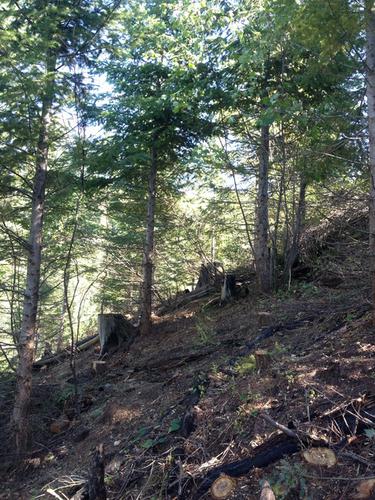当前位置:
X-MOL 学术
›
GCB Bioenergy
›
论文详情
Our official English website, www.x-mol.net, welcomes your
feedback! (Note: you will need to create a separate account there.)
Forest soil respiration and exoenzyme activity in western North America following thinning, residue removal for biofuel production, and compensatory soil amendments
Global Change Biology Bioenergy ( IF 5.9 ) Pub Date : 2020-01-31 , DOI: 10.1111/gcbb.12668 Lauren Sherman 1 , Mark D. Coleman 1
Global Change Biology Bioenergy ( IF 5.9 ) Pub Date : 2020-01-31 , DOI: 10.1111/gcbb.12668 Lauren Sherman 1 , Mark D. Coleman 1
Affiliation

|
Cellulosic biofuel from forest thinning operations is a potential renewable energy source in regions with overstocked forests such as those in western United States. However, it is possible that biomass removal can deplete nutrients from soil, which can alter soil respiration (Rs) and exoenzyme properties, and potentially impact tree growth. This study evaluates the impact of biomass removal on Rs and exoenzyme properties and the capacity of soil amendments to counteract any potential effects. At two study locations, we created four post‐thinning biomass retention levels: full biomass removal (0×), full biomass retention (1×), double biomass retention (2×), and a no‐thin treatment. Four soil amendment treatments were applied to each biomass retention level: N fertilizer (F), biochar (B), fertilizer plus biochar (FB), and an untreated control (C). We evaluated treatment effects on Rs and activity of four exoenzymes to represent C‐cycling, N‐release, and P‐release processes. Biomass retention levels had no effect on Rs (p = .42) or exoenzyme activities (p > .29). Variation in exoenzyme activity was explained by location, season, soil organic matter, soil moisture content, and temperature. Variation in Rs was explained by the same variables, in addition to C‐cycling exoenzyme activity and soil pH. Soil amendments had no effect on exoenzyme activities (p > .49), and no main effect on Rs (p = .48), though amendments influenced Rs differently at each location (p = .02). Short‐term findings suggest small‐diameter biomass removal for cellulosic biofuel production will not impact Rs and exoenzyme properties, and paired with our tree growth study, provide evidence that biofuel systems are a feasible renewable energy source in the western North America.
中文翻译:

稀疏,去除生物燃料生产中的残留物以及补偿性土壤改良剂后,北美西部的森林土壤呼吸和外切酶活性
在美国西部等森林积压过度的地区,森林疏伐产生的纤维素生物燃料是一种潜在的可再生能源。但是,去除生物质可能会耗尽土壤中的养分,从而改变土壤呼吸(R s)和外切酶的性质,并可能影响树木的生长。这项研究评估了生物质去除对R s的影响以及外切酶特性和土壤改良剂抵抗任何潜在影响的能力。在两个研究地点,我们创建了四个稀疏后的生物质保留水平:完全生物质清除(0×),完全生物质保留(1×),双重生物质保留(2×)和不稀疏处理。将四种土壤改良剂处理应用于每个生物量保持水平:N肥(F),生物炭(B),肥料加生物炭(FB)和未处理的对照(C)。我们评估了治疗对R s和四种外切酶活性的影响,以代表C循环,N释放和P释放过程。生物质保留水平对R s(p = .42)或外切酶活性(p > .29)。外来酶活性的变化通过位置,季节,土壤有机质,土壤水分和温度来解释。除了C循环外切酶活性和土壤pH值外,R s的变化还由相同的变量解释。土壤改良剂对外切酶活性没有影响(p > .49),对R s也没有主要影响(p = .48),尽管改良剂在每个位置对R s的影响不同(p = .02)。短期研究结果表明,去除小直径生物质以生产纤维素生物燃料不会影响R s 和外切酶特性,再加上我们的树木生长研究,提供了证据,证明生物燃料系统是北美西部可行的可再生能源。
更新日期:2020-01-31
中文翻译:

稀疏,去除生物燃料生产中的残留物以及补偿性土壤改良剂后,北美西部的森林土壤呼吸和外切酶活性
在美国西部等森林积压过度的地区,森林疏伐产生的纤维素生物燃料是一种潜在的可再生能源。但是,去除生物质可能会耗尽土壤中的养分,从而改变土壤呼吸(R s)和外切酶的性质,并可能影响树木的生长。这项研究评估了生物质去除对R s的影响以及外切酶特性和土壤改良剂抵抗任何潜在影响的能力。在两个研究地点,我们创建了四个稀疏后的生物质保留水平:完全生物质清除(0×),完全生物质保留(1×),双重生物质保留(2×)和不稀疏处理。将四种土壤改良剂处理应用于每个生物量保持水平:N肥(F),生物炭(B),肥料加生物炭(FB)和未处理的对照(C)。我们评估了治疗对R s和四种外切酶活性的影响,以代表C循环,N释放和P释放过程。生物质保留水平对R s(p = .42)或外切酶活性(p > .29)。外来酶活性的变化通过位置,季节,土壤有机质,土壤水分和温度来解释。除了C循环外切酶活性和土壤pH值外,R s的变化还由相同的变量解释。土壤改良剂对外切酶活性没有影响(p > .49),对R s也没有主要影响(p = .48),尽管改良剂在每个位置对R s的影响不同(p = .02)。短期研究结果表明,去除小直径生物质以生产纤维素生物燃料不会影响R s 和外切酶特性,再加上我们的树木生长研究,提供了证据,证明生物燃料系统是北美西部可行的可再生能源。











































 京公网安备 11010802027423号
京公网安备 11010802027423号